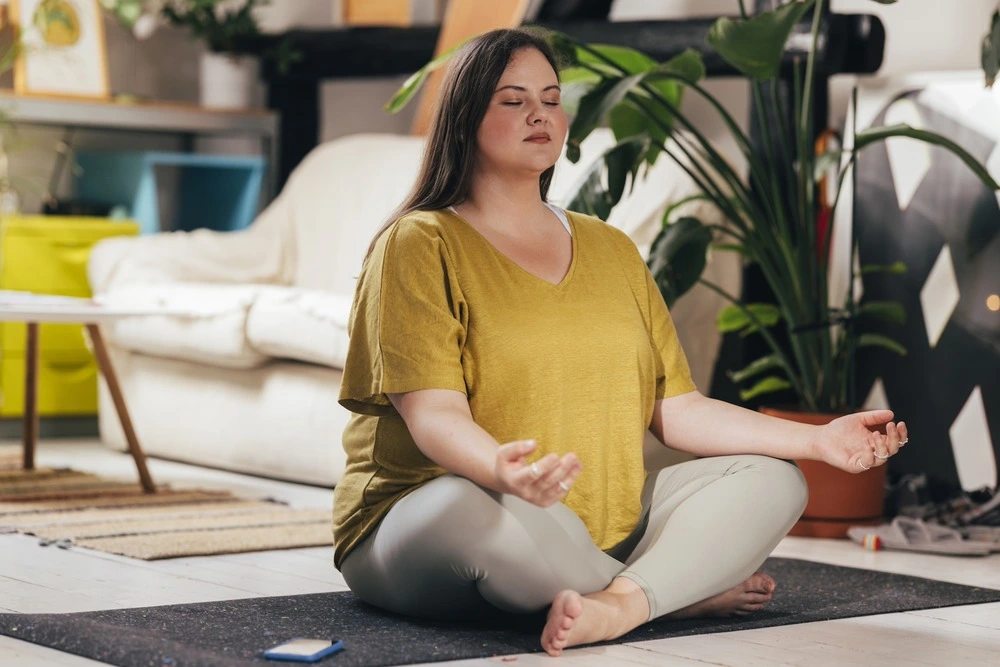
Meditation is a powerful practice for mental clarity, emotional well-being, and overall health. But have you ever wondered why some people find it easier to meditate after a full body fat burning workout rather than first thing in the morning? There’s a reason why the best online meditation is more accessible and effective after a physical activity session. In this blog, we’ll explore the science behind why working out before meditating can enhance your practice, the benefits of both morning and post-workout meditation, and tips on how to make the most of each time. Whether you’re a beginner or a seasoned practitioner, this article will provide insight into how you can optimize your meditation practice based on when you do it.
Have you ever tried to meditate first thing in the morning, only to find that your mind is racing with thoughts, your body feels stiff, or you simply can’t seem to settle into the practice? You’re not alone. Many people face these challenges when attempting morning meditation. But what if the solution was as simple as fitting in a workout before your meditation session?
It’s a curious thing, isn’t it? Why is it that meditation frequently seems easier after working out than it does in the morning? Is there a deeper factor at work, or is it merely the physical effort? In this blog, we'll examine the science underlying why many people find that meditation makes their lives simpler after working out and how you can make meditation work for you both in the morning and after working out.
Meditation, at its core, is about calming the mind, being present, and cultivating a state of deep relaxation. It’s a skill that takes time and practice, but the benefits are undeniable: reduced stress, improved focus, better emotional regulation, and enhanced well-being. But getting to that state of mindfulness can sometimes be challenging—especially if your body feels tense or your mind is busy with the to-dos of the day.
Exercise, on the other hand, is an activity that naturally prepares the body and mind for meditation. Here’s why:
After a workout, your body and mind are primed for relaxation and mindfulness, making it the perfect time to meditate. Here are some key benefits of post-workout meditation:
By integrating exercise into your routine before meditation, you’re not only improving the quality of your meditation but also enhancing the physical and emotional benefits of both practices.
Many people swear by morning meditation as the perfect way to start the day. However, it’s not always easy to meditate as soon as you wake up. Here's why morning meditation can sometimes feel difficult:
Despite these challenges, morning meditation can be incredibly beneficial if you approach it with mindfulness. By incorporating gentle stretching or light movement into your routine before meditation, you can overcome the physical discomfort and help ease the transition into a calm and focused state.
When I first started meditating, I tried doing it first thing in the morning, hoping that it would help me set a peaceful tone for the day. However, I quickly found that I was often too stiff, and my mind would race with all the things I needed to do. I would sit for a few minutes, feeling more frustrated than calm, and eventually give up.
One day, after a particularly online yoga classes for flexibility, I decided to try meditating afterward, in the same state of calm and relaxation that I felt post-workout. To my surprise, the meditation session was much more fulfilling. My body felt more comfortable, my mind was clearer, and I was able to stay present without feeling the urge to rush or get distracted.
This shift was a game-changer for me. I realized that meditation after movement allowed me to reach a deeper state of relaxation and focus. Now, I combine a morning workout with meditation afterward, and it has made a huge difference in my mindfulness practice. I feel more centered, energized, and focused throughout the day, and my mental clarity improves.
Although it can be challenging to meditate first thing in the morning, there are ways to make it easier:
At Aatmashanti Wellness, meditation is a vital part of online holistic wellness centre health. Whether you’re just beginning your practice or looking to deepen it, we offer resources, guidance, and support to help you make meditation a regular part of your routine. With a focus on Ayurveda, self-care, vegan eating habits, and spiritual healing, our platform is designed to support your overall well-being.
Visit www.aatamashantiwellness.com to explore our meditation resources, join our community, and begin your holistic healing journey today.
Many people find that it is easier to meditate after working out because exercise increases blood flow, lowers stress, and produces feel-good hormones that facilitate concentration and relaxation. Even though stiffness and mental congestion can make morning meditation difficult for some people, there are a few easy ways to make it more successful. No matter when you meditate, you can make it a worthwhile part of your day by integrating exercise into your morning routine and establishing specific goals for your practice.
Are you prepared to improve your meditation technique and achieve more focus and relaxation? Allow us to assist you on your path to holistic well-being by joining Aatmashanti Wellness right now.
I had joined cross fit and yoga program for few weeks under Shreya, she is an expert and conscientious person. She also keeps on motivating as and when needed, guided us regarding what is good for our health. Her workouts had great impact on my health. It was pleasure working out with her.
- Sylive
The experience was very thrilling. The advice which was given by Shreya ma'am about the daily diet was effective. I also went to other classes but they were not good as this one. The exercises which we did were of different types and it improved my skills too.
- Kiran
A truly incredible coach. Who will encourage you and the meal plans are definitely healthy and keeps you full. The exercises also help you loose weight and gain more muscle mass. I feel fresh and healthy now that I am following the plan. Thanks Shreya your incredible.
- Shita Shetty
On behalf of Indira Institute of Business Management, we would like to express our appreciation and gratitude to you and your team for the enthralling session conducted on, "The Importance of Fitness". It was the need of the hour, and we are confident that our students will be inspired to pursue their fitness goals after this wonderful and energetic session.
- Dr. M. Sreedharan
This is an amazing place to work out. Shreya and her team keep us on our toes (sometimes literally) and keep us motivated and energized throughout the session. The various types of exercises conducted by her keeps this class from being monotonous. Enjoying it thoroughly.
- Aswathy
